Dear Steemit Friends:
Today, we're continuing our journey through the amazing Guanzhong Folk Museum where we'll be taking a closer look at some of the most incredible art that has found it's way to doorways, arches and walls. If you missed the first post, you can find it HERE. The Guanzhong museum is very large, in fact, the whole site takes up around 1/3rd of a Kilometer squared of area, and is composed of 8 family courtyards. It was originally constructed in the Ming Qing dynasties and was home to the civil service administration, the census register, and a military general. You could say that these homes belonged to rich and privileged people of the past. In the ancient times, rich people's homes had one thing in common, and that is their emphasis on the decoration of doors, gates, arches, walls and roofs. Without a doubt, the art decorations have survived the test of time and we are blessed to have such amazing pieces of art with us today. Their value is just priceless!
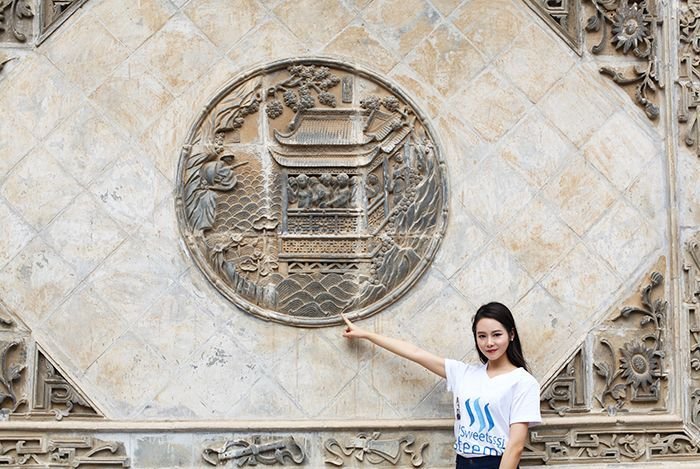
Since the 80's, this museum has been the sanctuary and rescue of countless works of art, whether it's stone carvings, wood sculptures/carvings or brick carvings. Each have been delicately preserved or restored to their original glory. Let us move forward and decipher these historical works of art together.
In almost all the ancient stone carvings, the subjects have been people, animals and paintings of birds and flowers.
Below, you can see the beam above the doors with a very auspicious dragon wood carving. This actually represents a well known idiom - Two Dragons Play with a Pearl. In ancient times, the pearl of a dragon represents the dragon's essence, and the beginning of the dragons austerities in becoming a mythical beast. In terms of it's meaning in art, the tussling of the pearl by the two dragons represent the pursuit of happiness and good fortune by mankind.
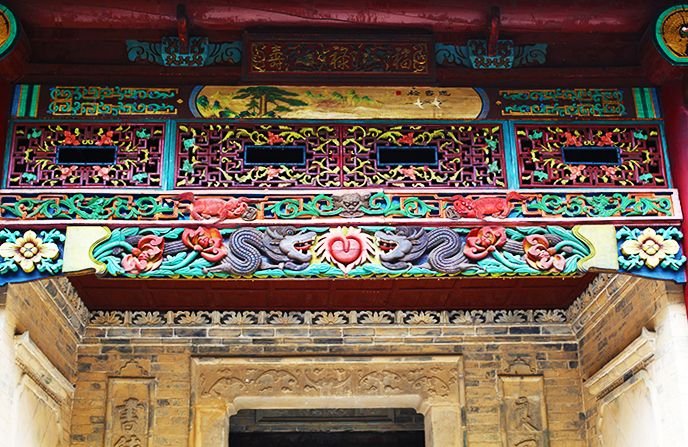
I really like the double dragon carving, and in particular the pearl at the center which is like a heart shaped fireball. On the edge of this heart shaped pearl fireball, are golden rays which also look like a heart shaped sun. It's a very beautiful work of art which I think many jewellers have taken the idea from when making their advertisements for their jewellery.
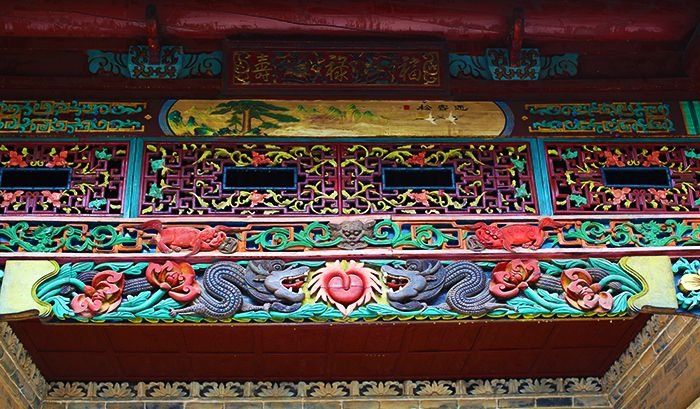
On this beam, we have the character 福 (good fortune) as well as some traditional paintings of flowers beside it. In between the black, we see the Eurasian Magpie which is also symbolic for auspicity. This comes from the legend that birds are bringers of good news.
Notice how these ancient door ways are designed to be symmetrical. This is because it is more aesthetic and pleasing to the eye. It also makes the doorway more grand and awe-inspiring.
Here, we have another beam at a door way, and this time the character 福 is written upside down. The reason for this is that it is a homonym play on words meaning that 福 is descending and it will soon pass good fortune to the dwellers of this building. Above it, is a perfectly symmetrical sculpture of a bird with it's wings flapping.
Here, we have another beam that is blossoming with very gaily-coloured flowers.
Above this doorway, we have some paintings of a dragon and magical clouds. These are all symbolic of the yearning for good fortune and fine livelihood.
Next, we see a very ancient beam which has begun to fade as a result of it's long history. Despite this, we can still see the remnants of the plants and flowers that have been carved into the wooden structure.
The golden dragons and phoenix above this door are simply magnificent.
1
The pair of golden wings are really attention grabbing.
Here we have a spectacular landscape painting.
Below, we see some paintings of two phoenixes facing each other. In ancient legend, phoenixes are known for their ability to be reborn and represent a strong lust for vitality. To this day, the phoenix has been an emblem for their auspicious nature.
Next up is what I think is the most interesting part of the museum. It is a divider wall called the horse head wall. Yes, it does look like a building but upon closer inspection, you'll see that it is actually just a wall! It seems to be as twice as tall as it is wide, and is taller than all the other buildings here. Even though it is just a wall, there are actually two roof eaves which are each decorated with stone carvings of flowers and it too has some traditional paintings separating the two "roofs". I think the artwork here even eclipses that of the other decorated archways.
On this ledge, there are some wood carvings of people seemingly talking about ancient mythology.
Below we have a stone carving of the Ancient Chinese mythological beast called the 'Qilin' or Kylin, a stone tiger, and a Pixiu (also a mythical beast). These mythical beasts were used as protectors for the people dwelling in the building, often to ward off evil spirits. They are also known for their abilities such as turning bad luck into good fortune, bringers of many offspring, long life, and bringers of marriage pre-destined by fate.
1
2
3
4
5
6
7
8
9
10
11
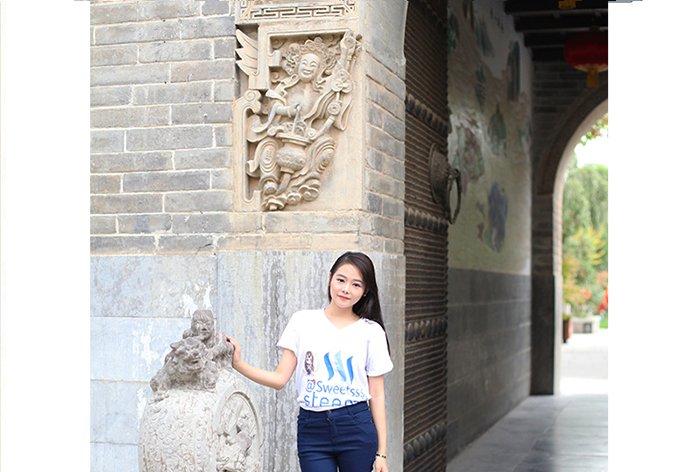
Next up, we have the stone engraved paintings. Most of these are of birds and flowers, bamboo flutes, bronze cauldrons, landscapes and pavilions.
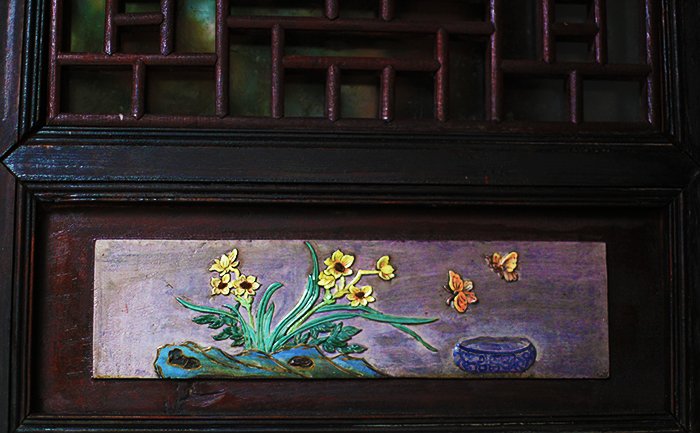
1
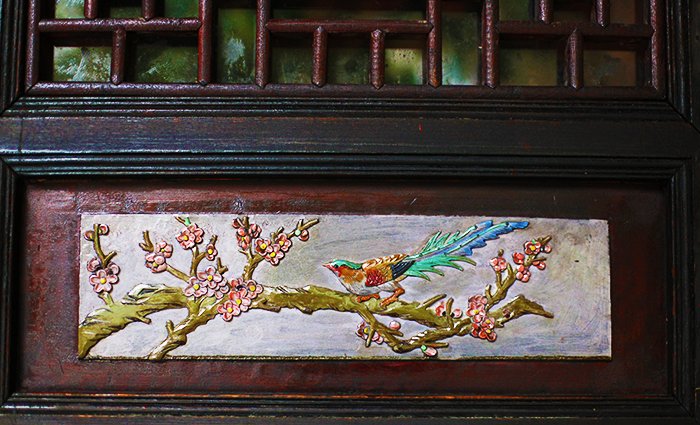
2
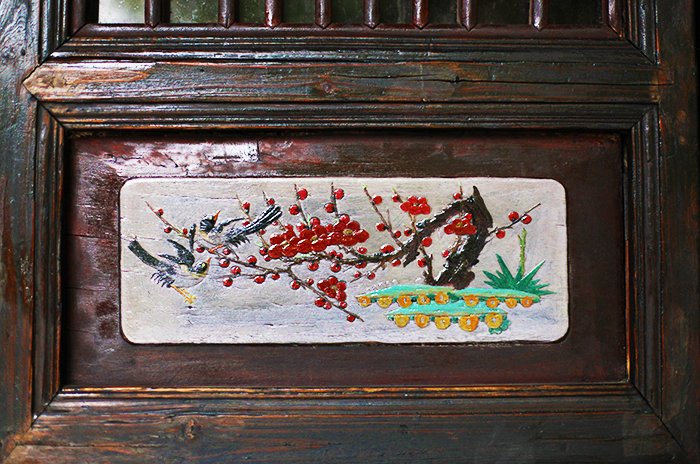
3
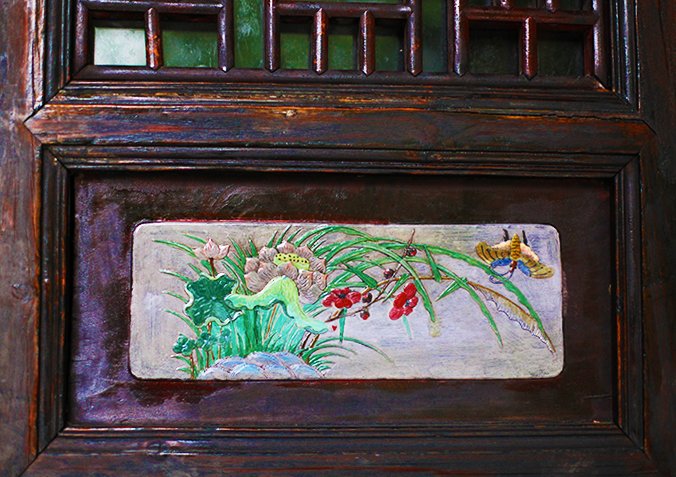
4
5
6
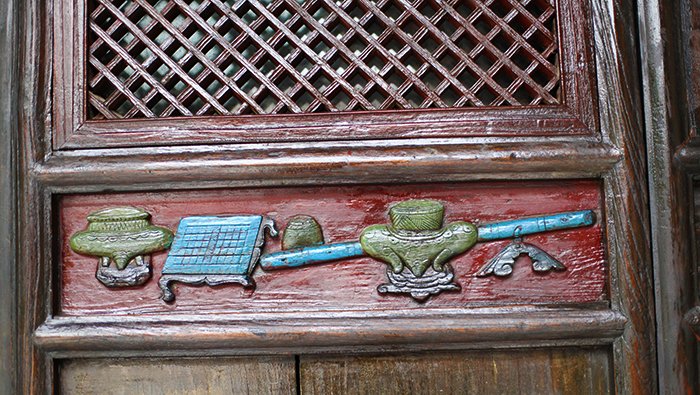
7
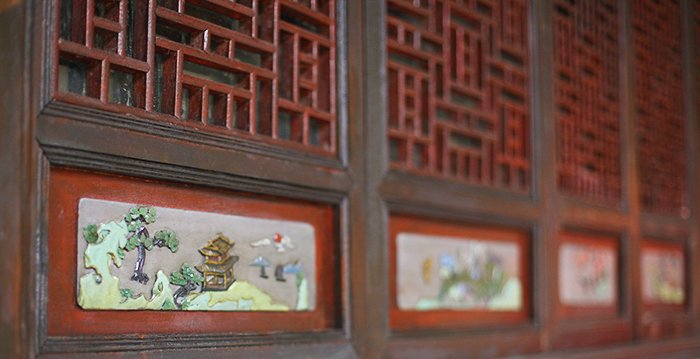
8
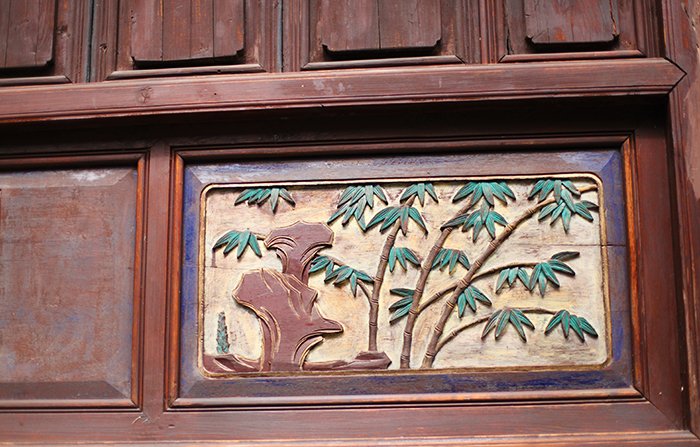
9
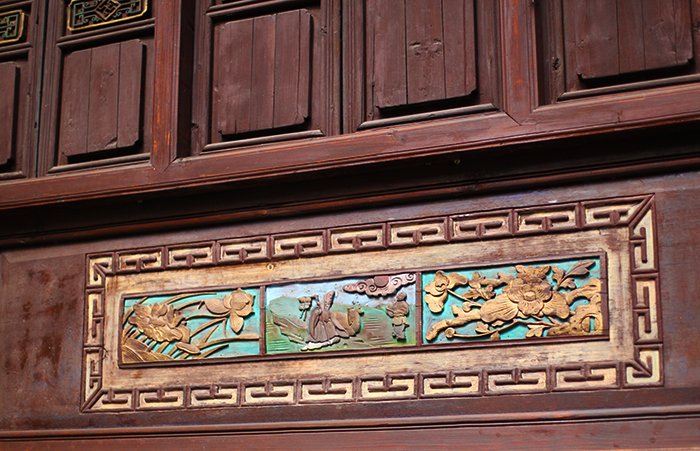
10
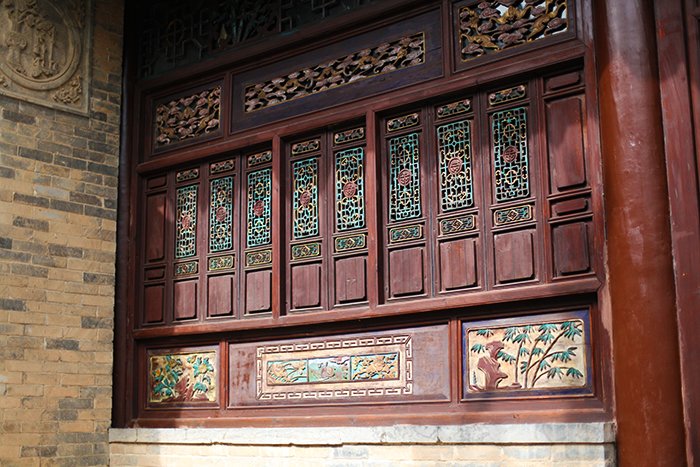
It's pretty clear that the work-smiths got their inspiration for their work from the flowers in the gardens. Here is a picture of one of the flowers in the garden, the stone carvings are exactly the same!
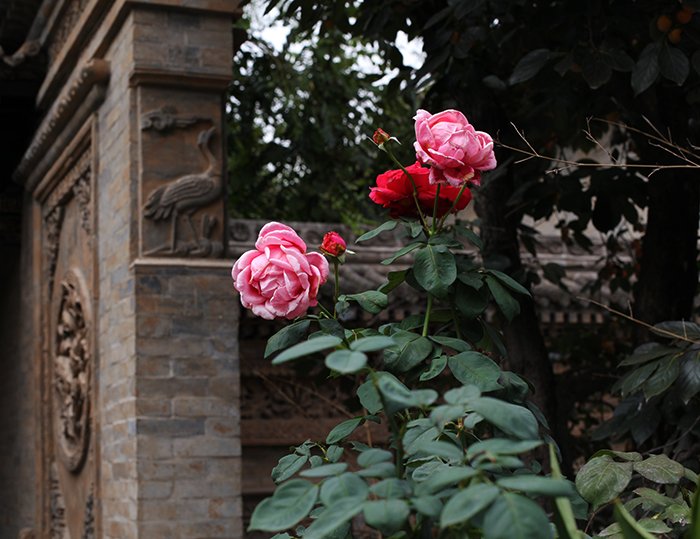
12
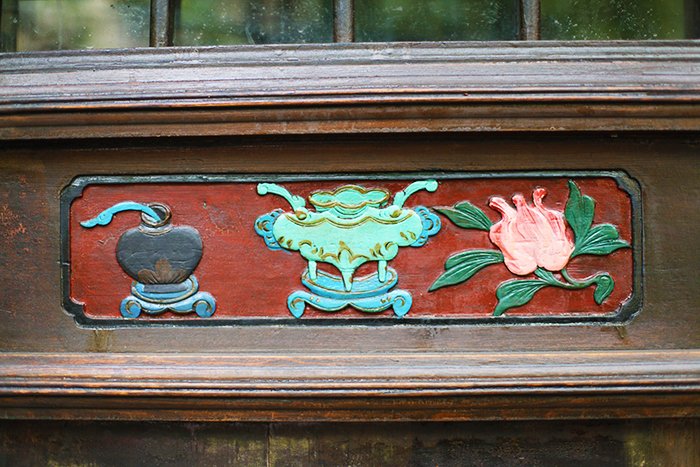
13
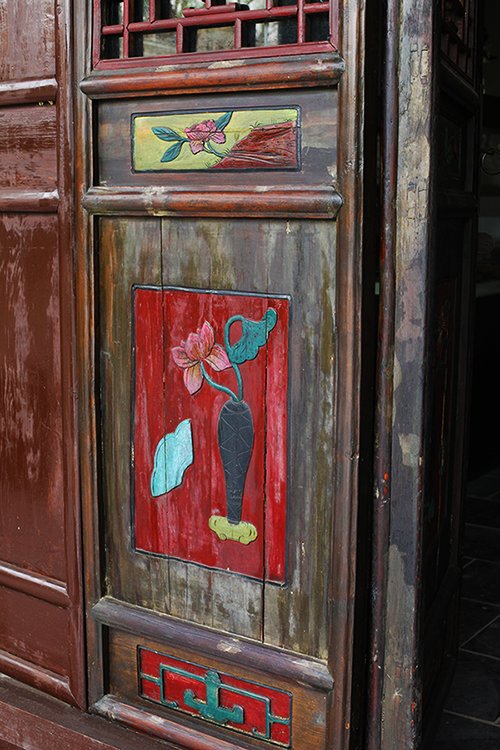
Carvings on the wall of a flower vase, flowers and a wine pot. They are so lifelike!

1
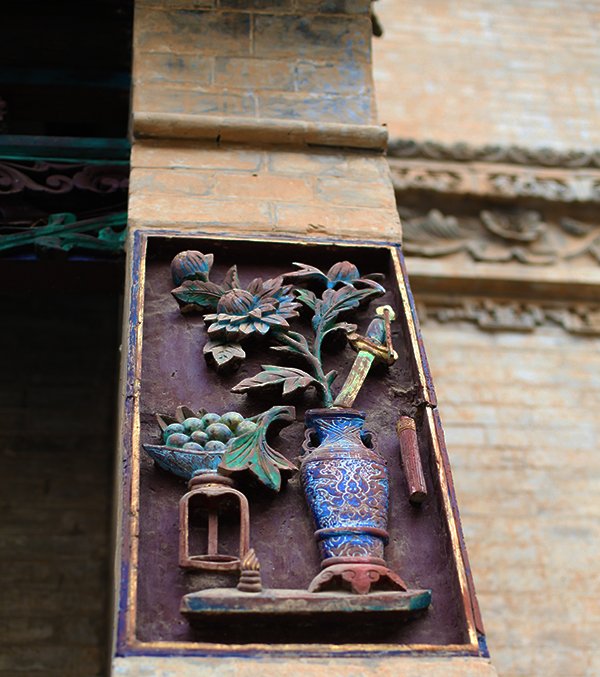
2
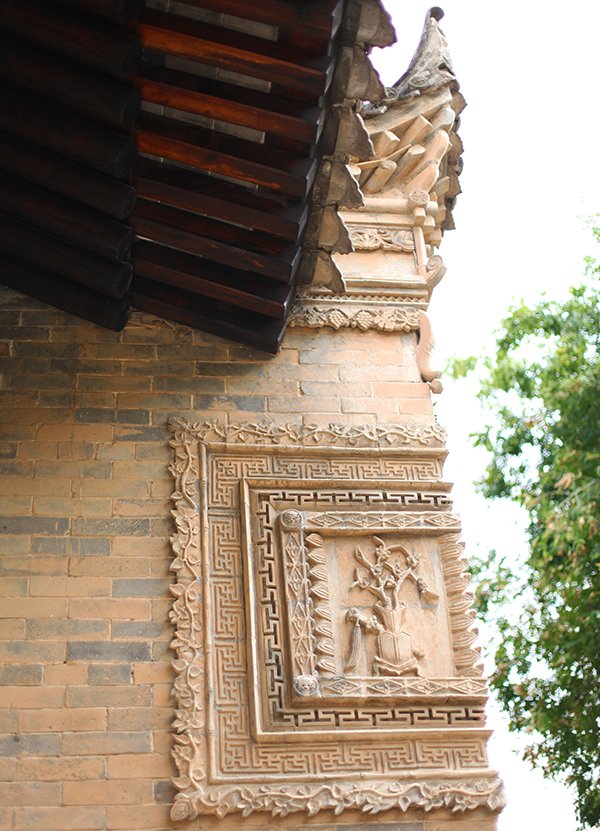
3
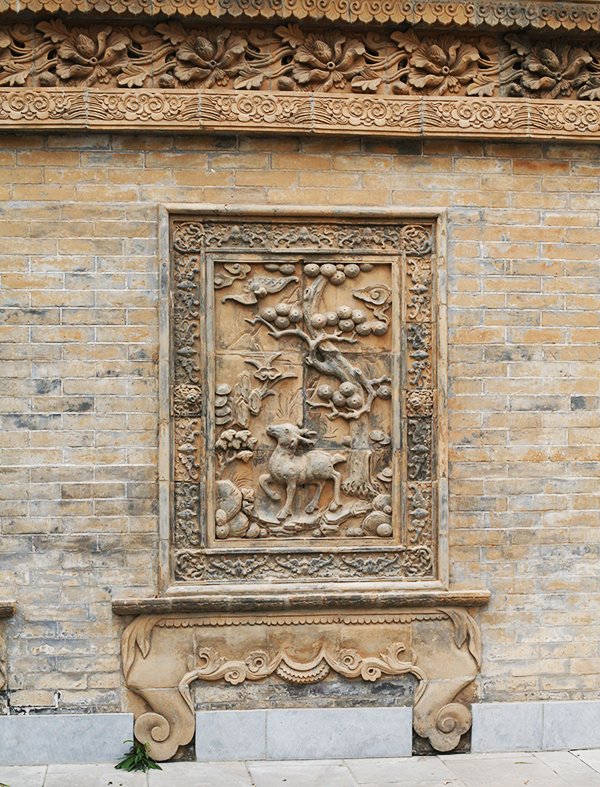
4
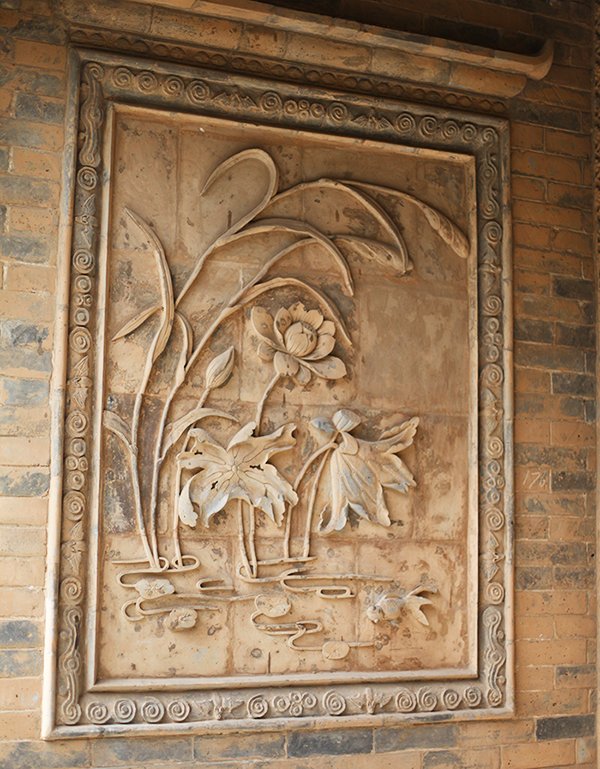
5
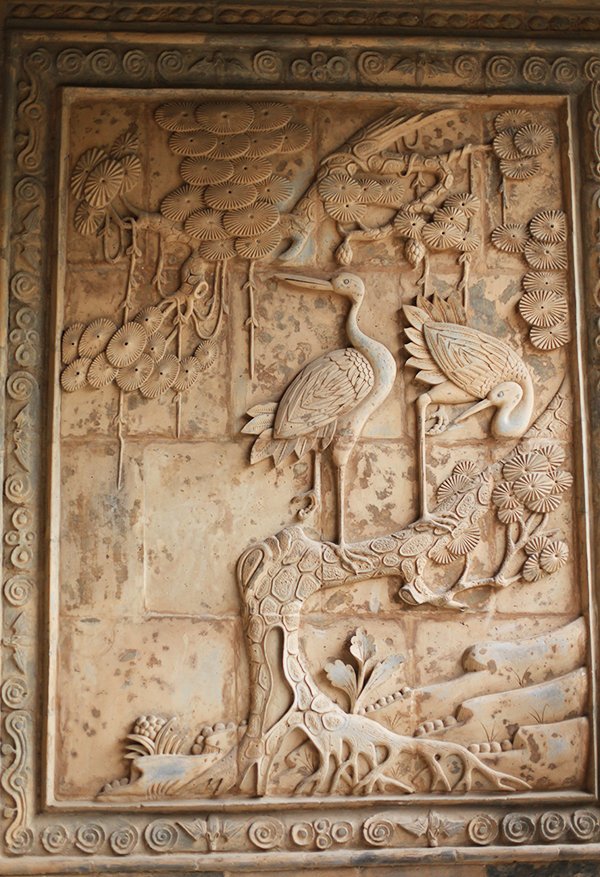
6
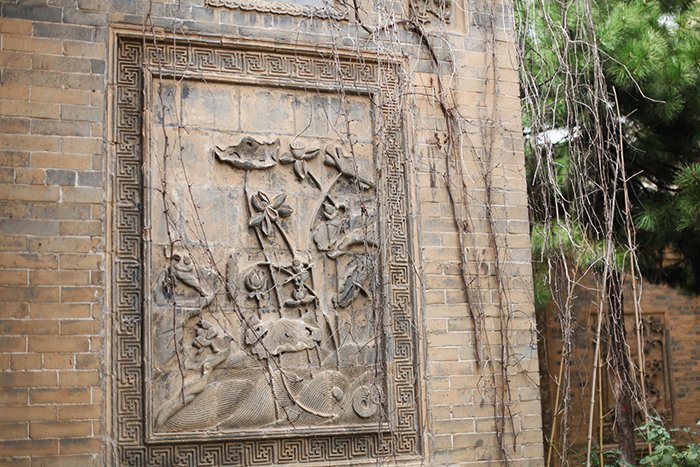
7
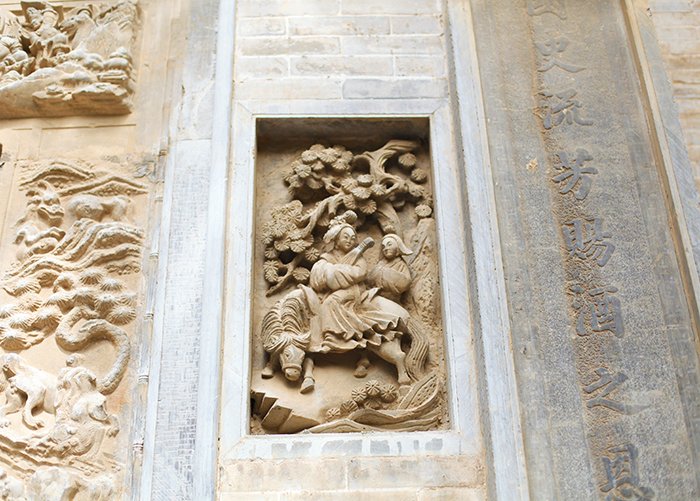
8
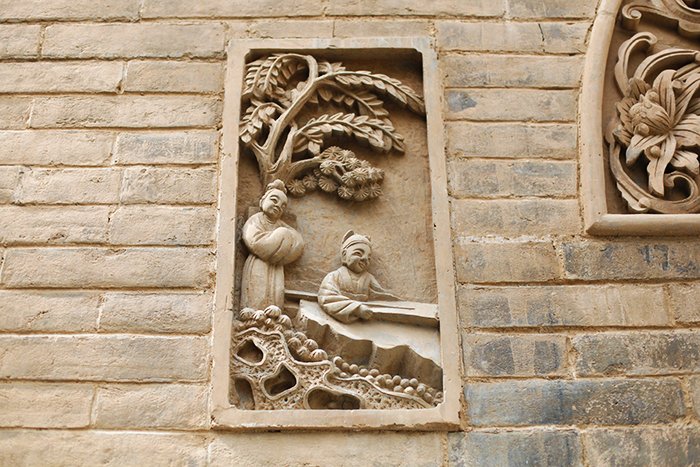
9
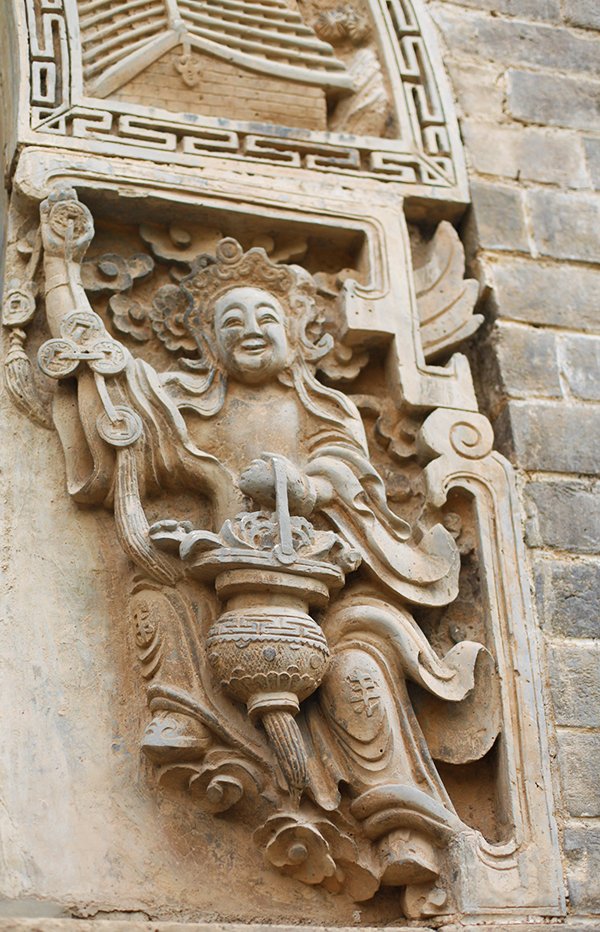
At the entrance, we have two brightly coloured paintings fixed on either side.
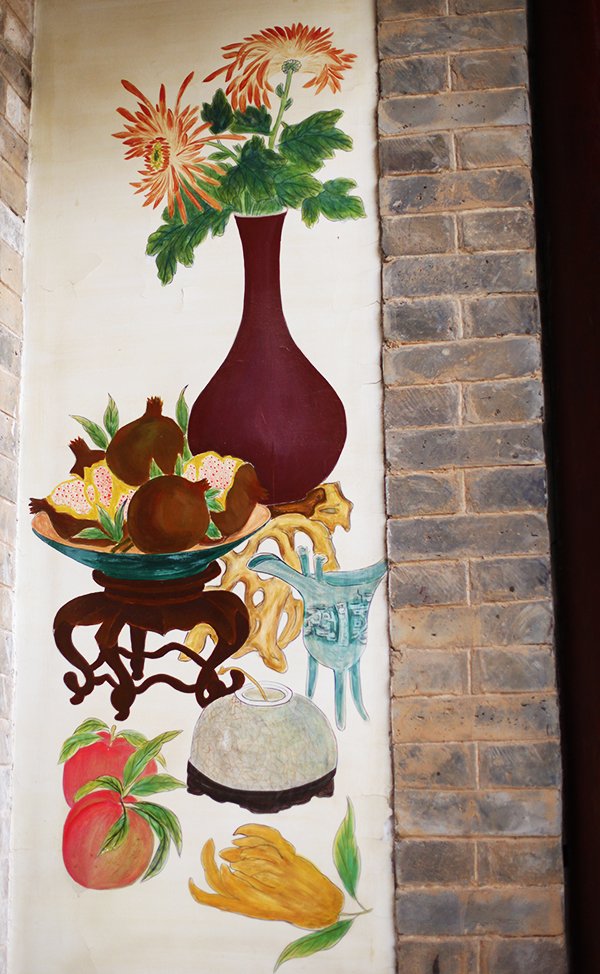
1
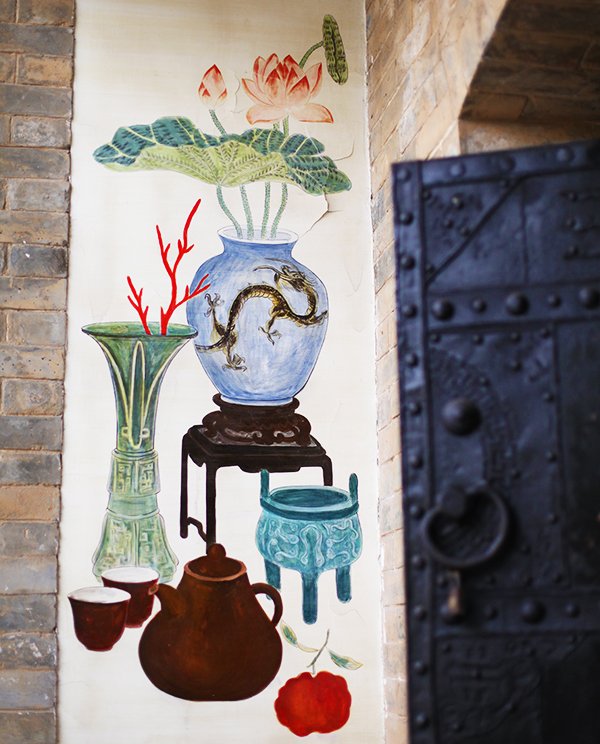
2
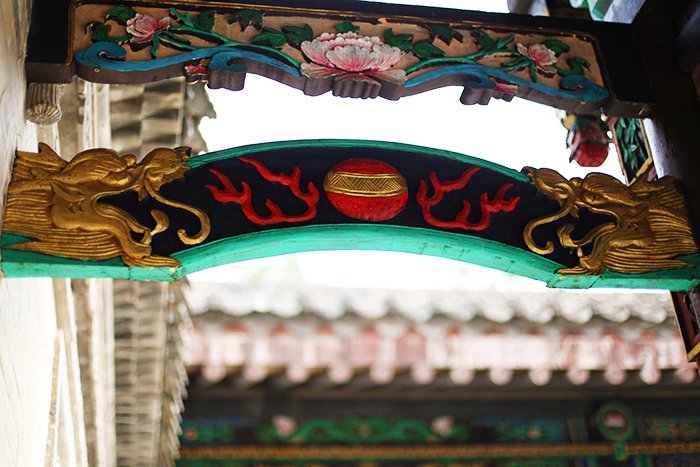
Even on every pillar, there are very detailed carvings of lotus's and lotus leaves.
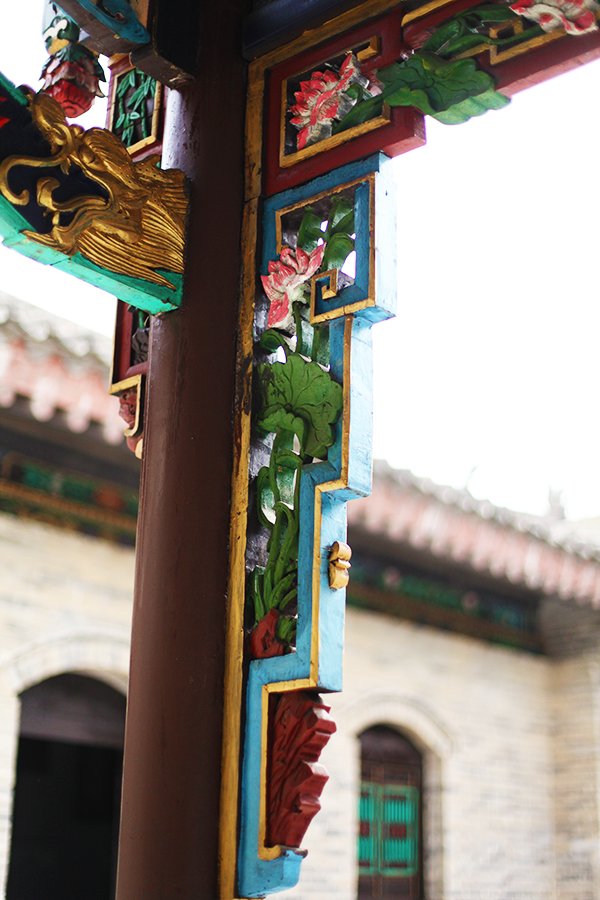
And that wraps up part two of our adventure through the Guanzhong Folk Museum. I hope everybody enjoyed the beautiful stone / wood carvings and traditional paintings seen in this very culturally significant site. I used to think that art was expressed through paintings on parchments or paper, but after visiting this place, my views have changed. It's impossible to deny the craftsmanship and brilliant artwork that exist other than on paper, moreover, it's amazing to see what the ancient people were able to do hundreds of years ago.
Stay tuned for more stories to come!
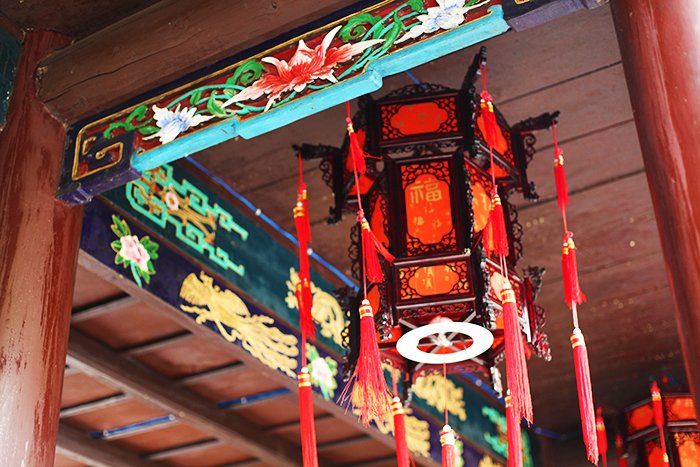
今天我想带大家继续探索关中民俗艺术博物院里精彩的门的艺术。上一篇文章可以在这里找到。这座博物院占地500亩,由八户人家的大院组成,有明清时期关中地区的文职官员,掌管户籍人口的官员和武将,所以都属于古代富有的人家。古代豪宅的共同特点就是,特别重视门楼、墙头、屋檐等处的雕花绘画等装饰,非常具有艺术价值。
从上世纪八十年代中后期以来,这个博物院已经收集、抢救和保护历代的石雕、木雕、砖雕,这些雕刻堪称精美的艺术品,下面我们就一起来解读一下门上的雕刻艺术。,大多以人物,动物和花鸟为主。下面这个门梁上,就雕刻着寓意吉祥喜庆的龙的图案。这个图案表达的是一个成语——双龙戏珠,在古代神话中,龙珠被看作是龙的精华,是龙修炼的原始之神。在人们艺术的表达中,两条左右对称的龙对于玉珠的争夺,则象征着人们对于美好生活的追求。我很喜欢上面双龙戏珠的那颗玉珠,象是一个爱心形状的火球,红色的爱心加上周边金黄色的光辉,又好像是心型的太阳,非常好看的图案,看起来好像是现在很多珠宝图案的灵感来源呢。下面这个门楼中间有一个福字,上方还有两幅花鸟国画,那黑白相间的鸟是喜鹊,也是吉祥的象征,传说这种鸟能为人们带来喜讯。古代的门楼上的装饰讲究中轴对称的布局方式,既满足了视觉上的美观,更体现了威严雄伟的气势。接下来这个门楼上的福字是倒过来的,福倒了谐音同福到了,寓意福气会降临于这户人家。我喜欢上面对称的两个翅膀,好像飞翔的鸟儿。下面这个门楼上画着两只对称的凤凰,在古代的神话中,凤凰有着欲火重生的勇气,它拥有强大的生命力,一直是人们所喜爱的吉祥物。
接下来让我最感兴趣的是一堵隔墙,叫马头墙,它是孤零零的高高立在那里,高度好像有宽度的两倍,比别的屋子都高。虽然只是一面墙,但是有两层挑檐,精美的花雕甚至超越了其他牌楼。这个门檐上雕刻着人物,好像在讲述一个个神话故事。下面一个部分是家家户户大院门口两侧放着的石狮,麒麟和貔貅,这些神兽在中国古代都启着保护主人,镇宅辟邪的作用。同时也有将厄运转为好运,得到财富,多子多孙,长寿和得到好的姻缘等作用。接下来的部分是门上漂亮的雕刻绘画,大多是花鸟,还有乐器笛子,青铜器鼎,景物和亭子。我相信工匠们的灵感一定来源于院子里的花,这是我在屋子门前拍到的花,简直雕刻的一模一样。
希望大家喜欢我们的关中雕刻艺术之旅,之后还有更多有趣的故事要和大家分享。
